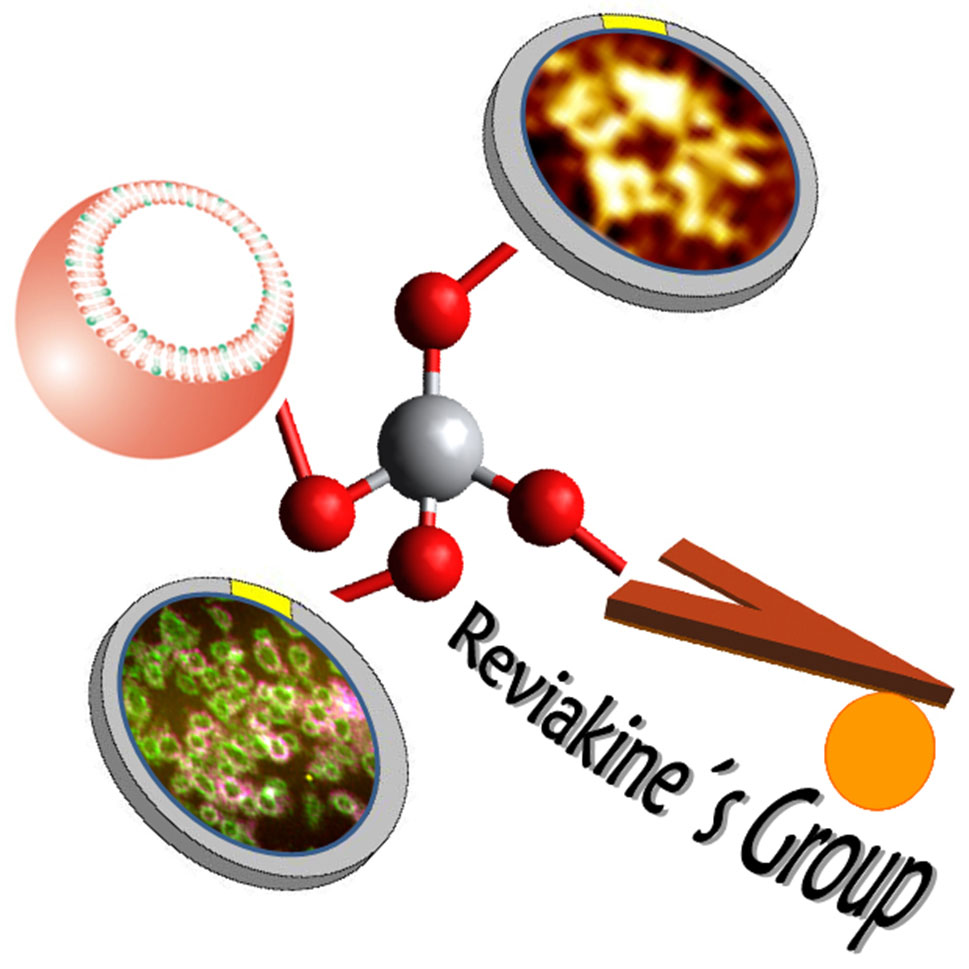Cell membrane and model systems. Supported bilayers. |
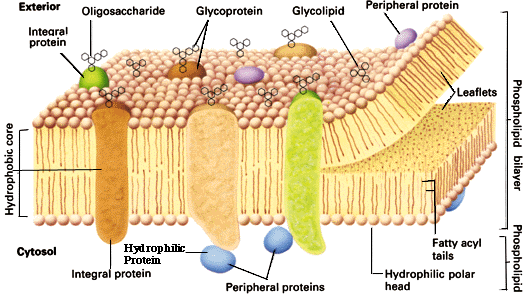
|
According to the fluid mosaic model, cell membrane (picture on the left) is envisaged as a lipid bilayer (~ 5 nm thick) with transmembrane proteins embedded in it and peripheral proteins bound to it. The model is discussed in detail by Singer and Nicolson in Science 175, 720 (1972). A modern revision of this model, discussed by Jacobson et al. in Science 268, 1441 (1995) may also be of interest. The structure performs a wide variety of barrier, selective transport, and signaling functions in the cells. Lipids can not be thought of as a passive solvent for the proteins. Instead, they play an active role in the functioning of the proteins and in the functioning of the membrane as a whole.
|
Pathways for supported bilayer formation from vesicles in solution: |
 |
Solid-supported lipid bilayers are a versatile model system for studying cell membranes and for studying interactions between biological systems and inorganic materials. The process of their formation remains enigmatic however. We studied it by time-resolved atomic force microscopy.
(The image on the left shows sonicated liposomes adsorbed on mica imaged with an AFM in contact mode in liquid).
|
Liposome - TiO2 interactions. Supported bilayer formation on TiO2 |
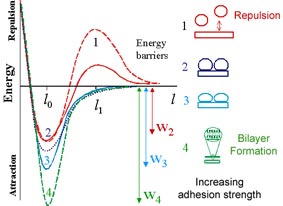
|
We investigated interactions between zwitterionic phospholipids (e.g., DOPC) and negatively charged phospholipids (DOPS) with TiO2 by quartz crystal microbalance, atomic force, and fluorescence microscopy. |
Properties of TiO2 - supported lipid bilayers: aminophospholipid asymmetry. |
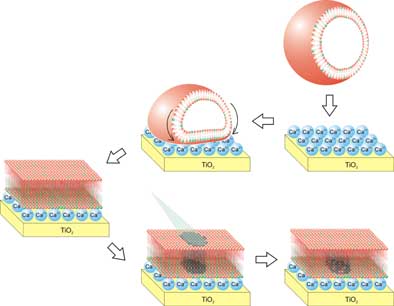
|
In this scheme, a liposome composed of phosphatidyl serine (PS, green) and phosphatidyl choline (red) is shown to adsorb on the TiO2 surface in the presence of Ca2+. The bilayers that form are asymmetric with respect to the distribution of PS between the two bilayer leaflets: most of PS is sequestered in the surface-facing (proximal) leaflet and its mobility is restricted. |
Patterns of supported lipid bilayers on SiO2/TiO2 pre-patterned surfaces. |
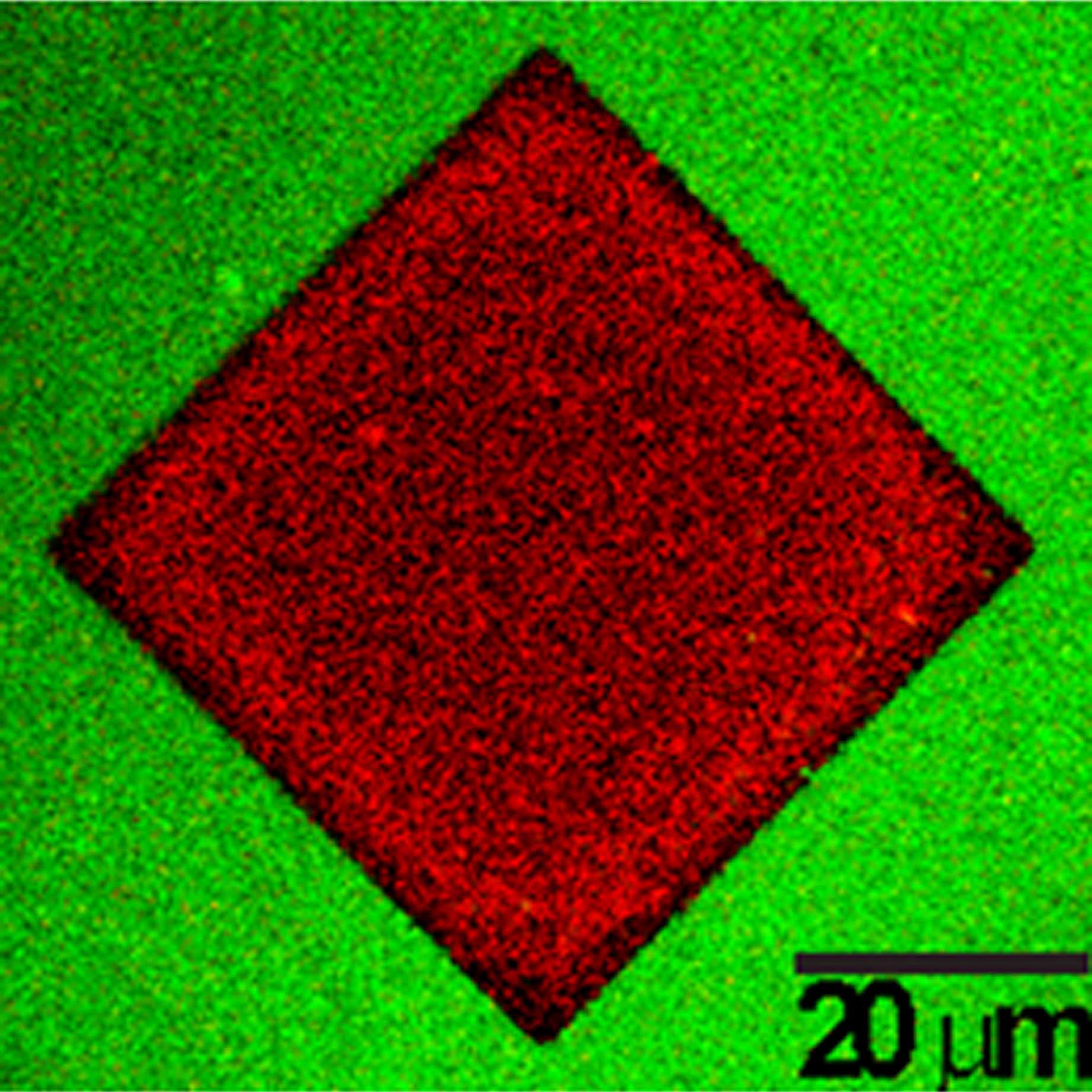 |
By relying on the detailed knowledge of the lipid-surface interactions, we could prepare patterns of bilayers of different compositions on the pre-patterned Si/Ti substrates. |
|
|
|
|
|
|
|
|
